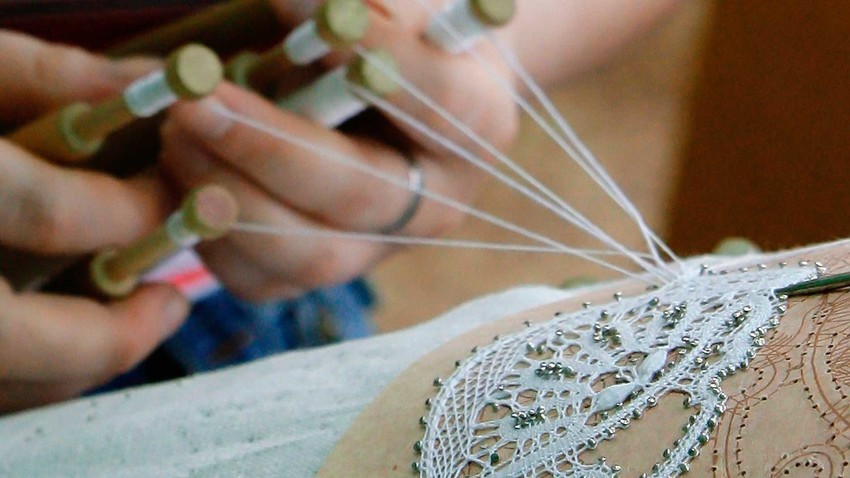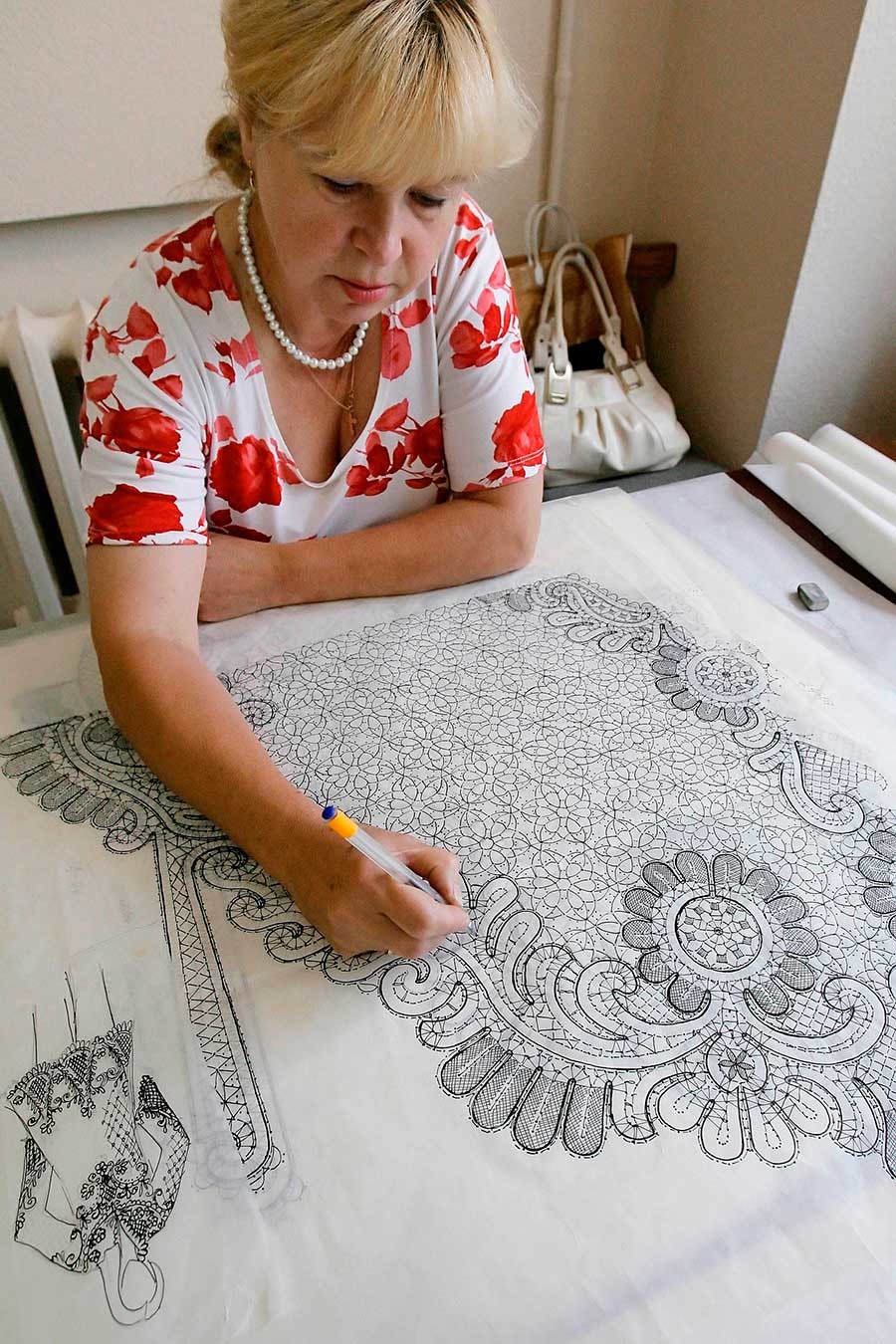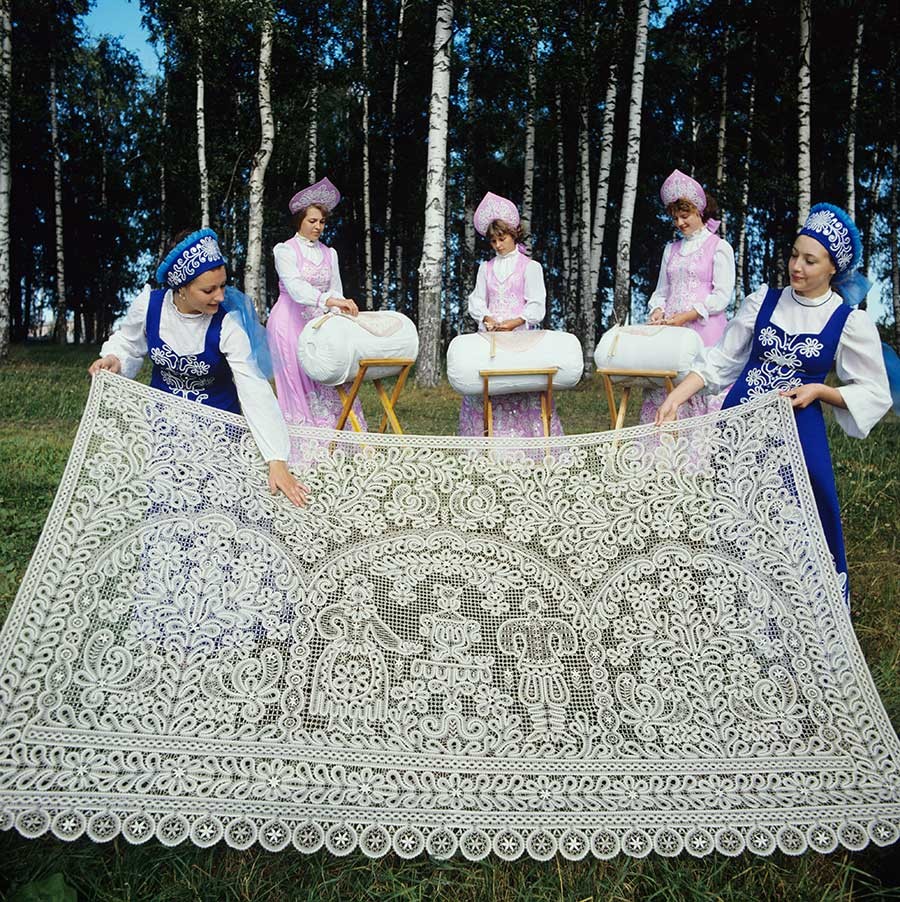
Vologda laces are worked manually on special pillows supported by "koklyushka," wooden sticks on which the tail part of a thread is fixed
Anton Denisov/RIA NovostiFeminity is always in fashion, and Russian lace has always been a fashion
It is not only about collars and cuffs:
Skilled workers in Russia’s north were engaged in weaving from gold and silver threads in the 17th century, and the world-famous domestic brand "the Vologda laces" was highly appreciated at the international exhibition in Philadelphia in 1876 and in Chicago in 1893.

In Russia, lace has always been a fashion must have
TASSThey were awarded gold medals at exhibitions in Paris 1925 and in Brussels 1958, received the grand
The skills and the imaginations of the Vologda lace workers can only marvel. Their laces today are worked manually on special pillows supported by "
Drawings of future designs are put on the special rolling pins and developed by each artist individually.
Designs range from geometrical figures, flowers, fishes, birds, deer, or lions. And also fantasy symbols such as unicorns or

Drawings of future designs
Anton Denisov/RIA NovostiOr human figures: ladies, gentlemen, riders, peasants in kokoshniks and sundresses. Images of architectural buildings, churches, bridges, arbors, or even palaces are common.
Vologda lace makers of the 1930's often used Soviet images in their
"
At the beginning of the 20th century, lace weaving in the Russian north was done by about 40,000 skilled workers. There was not only a
Handicraftsmen and dealers who sold the thinnest matter to capital cities and then exported them abroad. The Volga lace brought a bigger profit when they sold to Europe. But by the beginning of the 20th century, the Vologda lace became an independent brand and was bought up actively by foreign merchants.

Laces' designs range from geometrical figures, flowers to ladies in kokoshniks and even palaces
TASSBefore the revolution, it was actively used for decorating female dresses and accessories, made into cuffs, collars and even umbrellas. They produced lacy jacket backs.
As the economy grew,
During the Soviet
Today in Russia, the old, thin lace from natural threads can be found on the clothes of many Russians, topping items made from more modern materials.
All rights reserved by Rossiyskaya Gazeta.
Subscribe
to our newsletter!
Get the week's best stories straight to your inbox